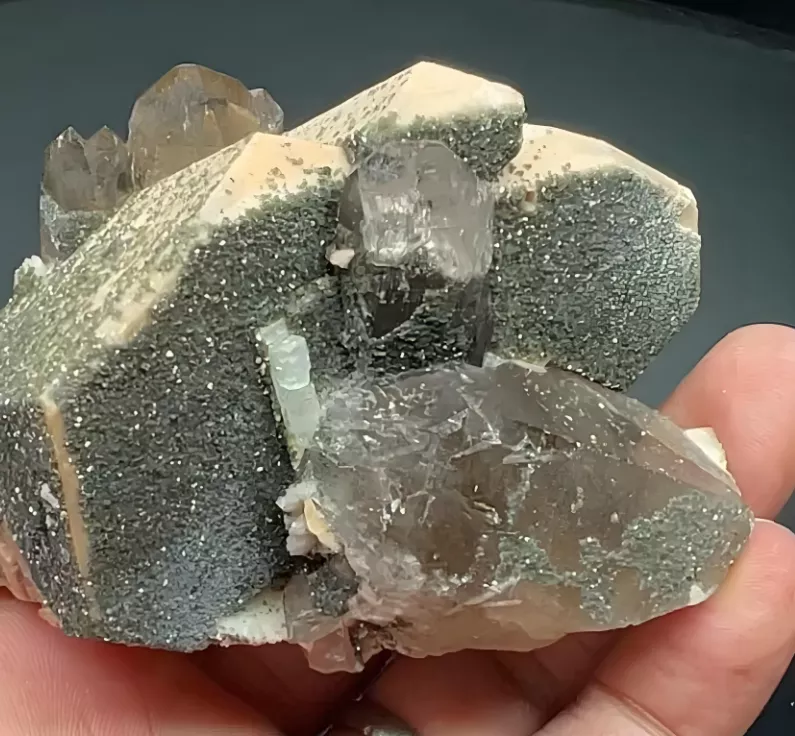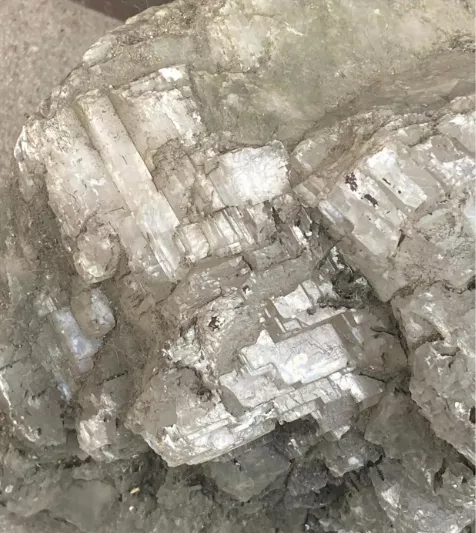Y-TZP Zirconia Beads: The Optimal Solution for Ultra-Fine Grinding of Quartz/Silica Sand

The demand for high-purity quartz and silica sand has been rapidly increasing, driven by their critical role in advanced technological sectors such as semiconductors, photovoltaics, and advanced ceramics. These industries require materials with ultra-fine particle sizes and exceptional purity to meet stringent performance and reliability standards. For instance, in semiconductor manufacturing, even trace contamination can cause device failures, while photovoltaic cells depend on high-purity quartz to maximize solar energy conversion efficiency.
Traditional grinding media such as steel balls and alumina beads have been widely used in quartz grinding. However, they present significant limitations. Steel balls introduce high levels of iron contamination due to wear and corrosion, which is unacceptable for high-purity applications. Alumina beads, although harder than quartz, are brittle and prone to fragmentation, leading to contamination and frequent media replacement. These drawbacks not only degrade product quality but also increase operational costs and downtime.
In response to these challenges, Yttria-stabilized tetragonal zirconia polycrystal (Y-TZP) beads, particularly those manufactured by Sanxin, have become the preferred grinding media for ultra-fine quartz and silica sand processing. These beads combine exceptional hardness, superior fracture toughness, chemical inertness, and high density, enabling faster grinding rates, longer service life, and dramatically reduced contamination risks.
This article offers a comprehensive analysis of Sanxin Y-TZP beads, detailing their material properties, grinding performance, economic benefits, and operational optimization strategies. Supported by industrial case studies and comparative data, it elucidates why Sanxin Y-TZP beads represent the gold standard in grinding technology for quartz and silica sand.
The hardness of grinding media directly influences grinding efficiency and wear resistance. Sanxin Y-TZP beads exhibit a Mohs hardness of ≥8.5 (HRA >87), exceeding that of quartz (7.0 Mohs) and comparable to or slightly below alumina beads (9.0 Mohs). This hardness enables the beads to efficiently fracture quartz particles, resulting in 30–50% faster grinding rates compared to traditional media.
More critically, Y-TZP beads possess exceptional fracture toughness (~8.0 MPa·m¹/²), a measure of resistance to crack propagation. This toughness is achieved through a stress-induced phase transformation mechanism, where the tetragonal zirconia phase converts to monoclinic at crack tips, absorbing fracture energy and preventing catastrophic failure. Alumina beads, by contrast, are brittle and prone to fragmentation, which leads to bead breakage, contamination, and frequent media replacement.
This unique combination of hardness and toughness ensures minimal bead wear and breakage, maintaining grinding efficiency and reducing contamination risks over extended operational periods.
In ultra-fine quartz grinding, contamination control is paramount. Sanxin Y-TZP beads boast an iron contamination level ≤3 ppm Fe₂O₃, which is negligible compared to steel media that typically introduce 300–1000 ppm Fe₂O₃. This ultra-low contamination is essential for meeting solar-grade (<50 ppm Fe₂O₃) and electronic-grade (<10 ppm Fe₂O₃) quartz specifications.
The beads are stabilized with 5.2 wt% Y₂O₃, which prevents low-temperature degradation (LTD)—a common issue where yttria-stabilized zirconia undergoes spontaneous phase transformation in humid environments, leading to mechanical degradation and performance loss. This stabilization ensures the beads maintain their mechanical properties and grinding performance over long service times, even in humid or aqueous environments.
With a density of 6.02 g/cm³, Y-TZP beads are significantly denser than alumina beads (approximately 3.9 g/cm³) and glass beads. This high density translates to 40% higher kinetic energy transfer during bead collisions, which directly improves grinding efficiency.
The benefits of this high density include:
Ability to operate with 70±2% solid-content slurries, compared to 60–65% for alumina media. Higher solids content reduces drying costs and increases throughput.
Achieving up to 25% higher throughput in vertical stirred mills such as IsaMills, without increasing energy consumption.
These characteristics make Y-TZP beads not only more effective but also more energy-efficient, reducing operational costs and environmental impact.
Selecting the appropriate bead size is critical for achieving the desired particle size distribution and maximizing grinding efficiency. The following bead size recommendations correspond to target fineness (d97):
| Optimal Bead Size (mm) | Size Tolerance (mm) | |
>10 μm | 1.5–2.5 | ±0.05 |
5–10 μm | 1.0–1.5 | ±0.03 |
<5 μm | 0.8–1.2 | ±0.02 |
Maintaining a tight size distribution (±5%) is essential to ensure consistent grinding efficiency, minimize internal friction, and reduce bead wear and energy loss.
for Y-TZP beads includes:
(e.g., Netzsch LMZ), optimized for bead sizes between 0.8 and 2.5 mm.
(e.g., Dyno-Mill), suitable for bead sizes from 1.0 to 3.0 mm.
Ball mills are generally discouraged for Y-TZP beads due to approximately 40% higher power consumption caused by bead density and inefficient energy transfer.
to maximize bead performance and longevity are:
: 8–12 m/s, balancing grinding efficiency and bead wear.
: 6–9 to prevent yttria leaching; exposure to pH above 11 can degrade bead stability and cause contamination.
: Maintain below 60°C to avoid thermal stress and phase instability.
Adhering to these parameters ensures optimal grinding performance and bead durability.
Sanxin provides an advanced SmartBead RFID tracking system that enables real-time monitoring of bead condition, facilitating proactive maintenance:
: A greater than 10% increase in median diameter (D50) triggers replenishment to maintain grinding efficiency.
: Sudden spikes may indicate deviations in pH, temperature, or other process variables requiring correction.
: Detection of bead fragments above 0.1% signals improper operation or bead damage, prompting immediate investigation.
This system minimizes downtime, reduces contamination risk, and extends bead service life, ultimately lowering operational costs.
| Sanxin Y-TZP | 95% Alumina | Savings | |
Media cost (¥ million) | 3.2 | 1.8 | -1.4 (higher upfront) |
Media consumption (kg/t) | 0.03 | 0.25 | 88% lower consumption |
Electricity (¥0.8/kWh) | ¥440,000 | ¥680,000 | ¥240,000 saved |
Although Sanxin Y-TZP beads have a higher upfront media cost, their durability reduces media consumption by 88%, significantly lowering replacement costs. Additionally, their higher grinding efficiency reduces electricity consumption by approximately ¥240,000 annually. Combined, these factors yield annual operational savings of around ¥920,000, plus an estimated ¥1.5 million premium from improved product quality and increased throughput.

: Increased by 38%, from 1.3 to 1.8 tons per hour.
: Reduced to 8–12 ppm from 15–20 ppm.
: Achieved in under 3 months.
This case highlights the tangible benefits of adopting Sanxin Y-TZP beads in high-purity quartz processing, combining enhanced productivity with superior contamination control.
Ongoing research aims to further enhance Y-TZP bead performance through innovative material modifications:
Alumina-doped Y-TZP (Al-3Y-TZP): Incorporating alumina improves fracture toughness up to 16 MPa·m¹/² via grain-boundary segregation, increasing resistance to cracking under extreme conditions.
Ceria-stabilized zirconia (Ce-TZP): This variant reduces oxygen vacancy diffusion, enhancing resistance to low-temperature degradation (LTD), thereby extending bead lifespan in humid or aqueous environments.
These advancements promise to push the boundaries of grinding media performance, supporting the evolving demands of ultra-fine grinding in advanced industries.
Sanxin Y-TZP zirconia beads represent the optimal grinding media for ultra-fine quartz and silica sand processing, delivering unmatched purity, grinding efficiency, and cost-effectiveness. Their superior hardness, fracture toughness, chemical stability, and high density enable faster grinding rates, reduced contamination, and significant operational savings.
For industries where contamination control and throughput are critical, such as photovoltaics and semiconductors, adopting Sanxin Y-TZP beads is a compelling choice. Sanxin further supports customers with customized trials and computational fluid dynamics (CFD) simulations to optimize grinding systems, ensuring the best performance tailored to specific applications.
This comprehensive overview underscores why Y-TZP zirconia beads from Sanxin have become the gold standard in ultra-fine grinding technology for quartz and silica sand, driving innovation and quality in high-tech manufacturing sectors.
The superior properties of Y-TZP beads stem from their unique microstructure, composed of ultra-fine crystalline zirconia particles stabilized in the tetragonal phase by yttria doping. This microstructure imparts:
, which ensures consistent bead size and shape, critical for predictable grinding behavior.
that minimize slurry contamination and reduce wear on mill internals.
, making them resistant to acids, bases, solvents, and other corrosive fluids common in wet grinding processes.
These characteristics contribute to their long service life and low contamination profile, essential for sensitive applications such as pharmaceuticals and electronics.
While alumina beads are widely used due to their cost-effectiveness, their lower fracture toughness and higher wear rates limit their suitability for ultra-fine grinding of high-purity quartz. Glass beads, though chemically inert, have lower density and hardness, resulting in lower grinding efficiency and faster wear.
Y-TZP beads outperform these alternatives by combining:
| Y-TZP Beads | Alumina Beads | Glass Beads | |
Density (g/cm³) | ~6.0 | ~3.9 | ~2.5 |
Hardness (Mohs) | ≥8.5 | ~9.0 | ~5.5 |
Fracture Toughness (MPa·m¹/²) | ~8.0 | ~3.0 | ~1.0 |
Wear Rate | Very low | Moderate | High |
Iron Contamination (ppm Fe₂O₃) | ≤3 | ~10-50 | Negligible |
This table highlights why Y-TZP beads are preferred for applications demanding high purity and grinding efficiency.
The extended lifespan and lower consumption of Y-TZP beads reduce waste generation and resource consumption. Additionally, their energy-efficient grinding lowers electricity usage, contributing to reduced carbon emissions. These factors align with growing industrial emphasis on sustainable manufacturing practices.
Sanxin offers customized bead sizes and formulations tailored to specific grinding requirements, ensuring optimal performance across diverse applications. Their technical support, including CFD simulations and trial programs, assists customers in optimizing mill design and operating parameters, maximizing productivity and cost savings.
Sanxin Y-TZP zirconia beads are a technological breakthrough in grinding media, combining:
Exceptional hardness and fracture toughness for efficient, contamination-free grinding.
essential for high-purity quartz applications.
enabling superior energy transfer and throughput.
with optimized bead sizing and process parameters.
through reduced media consumption, energy savings, and product quality premiums.
These advantages make Sanxin Y-TZP beads the optimal solution for ultra-fine grinding of quartz and silica sand, meeting the evolving demands of advanced industries and setting a new benchmark for grinding media performance.

Submit your demand,
we will contact you ASAP.

Sanxin New Materials Co., Ltd. focus on producing and selling ceramic beads and parts such as grinding media, blasting beads, bearing ball, structure part, ceramic wear-resistant liners, Nanoparticles Nano Powder

